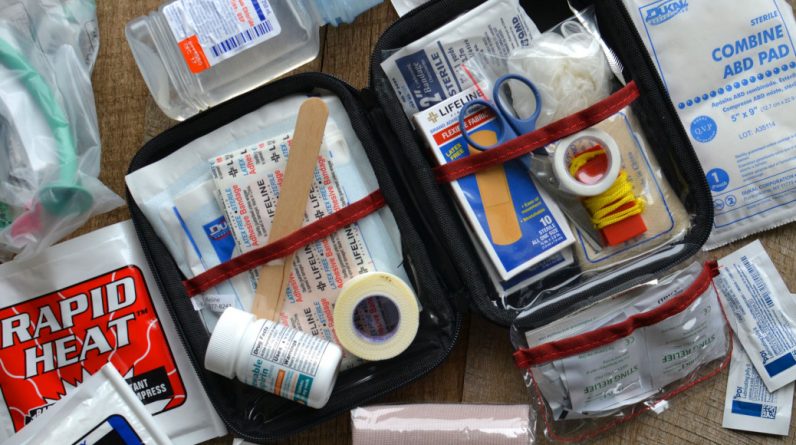
It can be argued that making a Bug Out Plan is as or even more essential than having a Bug Out Bag packed, as one can escape mortal danger with or without a survival kit as long as they have a plan. Here we will focus on how to maximize our survival preparedness by examining how to execute a bug out or strategic evacuation.
What Disasters Can Take Place In Your Area?
An essential component of survival preparedness is knowing what has occurred historically. Is your area known for having massive floods? Are you living in an earthquake zone? Has your town or city been a target of terrorist attacks? Consider these factors when making your plan, they may immediately eliminate some choices or make others more favorable.
What Are Your Strengths And Weaknesses?
Considering these can help adapt your Bug Out Plan to complement your strengths, mitigate your weaknesses, and give you a much higher chance of survival. Are you very fit? Great, you will be able to carry more survival supplies and plan a longer route. Do you know how to perform survival first aid? That could be vital if a member of your group gets hurt. Identifying weaknesses can be as simple as understanding what survival skills you need to train in. Can you build a fire reliably? Are you able to navigate at night with your map and compass? Do you have a working knowledge of plants and animals in your area? Learning these things and other survival skills will make your Bug Out Plan far stronger. Remember, the more skills you have, the less you need to carry.
Plan on Multiple Possible Destinations
Best practice for survival planning is to have at least 4 destinations as a part of your Bug Out Plan, one for each cardinal direction on the map (North, South, East, West). This can however be narrowed down due to both geography and the likeliness of particular events occurring. For example, if you lived on the western bank of the Mississippi River and were preparing for a flood, you would not need to consider bugging out to the East.
Having multiple destinations in your plan, as well as multiple routes to each adds a level of flexibility that simply must be planned out ahead of time. Going through this planning effort will make you ready no matter what disaster fate throws at you.
Have Specific Destinations In Mind
Having a destination in your Bug Out Plan gives you a goal to work towards as you travel. This will have an enormous positive psychological impact on your survival scenario. Surviving is incredibly difficult in even favorable conditions and having a positive state of mind makes a substantial difference towards success.
Certain types of destinations, such as a second home, relative’s house, or designated camp also allow for caching survival supplies both at the location and on the routes to them. Besides giving you an even greater psychological boost, this will massively increase your likelihood of survival as well as lessen the amount you have to carry. If none of these alternatives are available look for large public facilities or designated shelters. No matter what it is, having a destination is a key element to your Bug Out Plan.
How Fast Will You Be Able To Travel
This is vital for planning your routes. If you can calculate your average travel speed you will know how many hours or days it will take you to reach your destination. This then informs you as to how much survival gear and supplies you need to either forage, carry, or cache along the way. Your average travel speed will be most heavily impacted by the following variables:
Weight of your Bug Out Bag
An average person should carry no more than 25 percent to 30 percent of their body weight in a backpack. More than this is possible but highly challenging, plan your Bug Out Bag accordingly. It is even better if you can try and perform a test carry of your bag over a significant distance when planning it. You need to be able to carry your pack for hours, if not days. Bringing too much weight will hobble your progress, bring only what you need to survive.
Terrain you will be crossing
The average walking speed with a pack is 2.5-4 miles per hour over FLAT ground. When considering your route you need to be aware of what type of terrain you will be crossing. People often make the mistake in thinking that hiking downhill is easier than uphill. This is often not true as hiking with a pack downhill will mean that you need to take special care to have proper footing and to brace your steps. Will you be picking your way through rubble or crossing a body of water? Plan a realistic pace as a part of your survival planning to have a better outcome.
Overall fitness
A very fit person will obviously be capable of covering more ground than an unfit person. Assess yourself realistically for this trait, there are no egos in survival. If it has been a while since you went for a run, plan accordingly. The great part of making a Bug Out Plan is that it brings to light your weaknesses. This allows you to address them BEFORE they become a liability. If your plan would benefit from additional fitness, start off slow going for walks or runs and then build up to conditioning your body to hike with the additional weight of a pack.
Makeup of your party
If you are creating Bug Out Plan for accompanying people you will have to consider this as a factor. If you are moving with elderly people or children, you should incorporate into your survival preparedness the additional resources and time required to assist them. Do this by planning the progress of your routes based on how far you expect to travel at the pace of the least fit/mobile of your party.
Factors to Include in Your Bug Out Plan
Plan on packing an extra waterproof or laminated map with your routes and destinations clearly marked. It is additionally helpful to mark landmarks along each route to assist navigation.
If you are bugging out with others establish a rally point for you all to meet. Doing this beforehand prevents a messy situation where you are all wasting valuable time desperately attempting to contact each other when you should be on the move.
Also bring along a list of emergency numbers for friends, family, and government agencies. This will enable you to stay in touch and keep up to date on the disaster situation as it developments.
This may seem obvious but actually USE your Bug Out Bag to make your journey easier. This may mean using your hatchet to fashion a shelter or a pry tool to open a door to access a shortcut. There is no point in planning, packing, and carrying awesome survival gear if you are not going to employ them. Have you ever gone camping with a friend who brings a bunch of gadgets that they never even take out? Battery powered tent fan, anyone? Do Not Be That Guy.
Plan on looking for a place to spend the night 2-3 hours before sunset each night. You may not like the idea of trading that much travel time in but this will give you enough time to find a safe, dry place to camp, prepare food and water, and establish your shelter.
Know that a 160 lb person will use up more than 400 calories in an hour while hiking and more than 500 if carrying a full backpack. This is a level of exertion comparable to that of aerobics or running. Incorporate into your survival planning rest breaks and methods of keeping yourself hydrated and fueled up.
Conclusion
Creating a Bug Out Plan is an indispensable step in your overall survival planning. Utilizing these tips to build a simple, effective survival preparedness plan will ready you and your loved ones to survive when disaster strikes.



